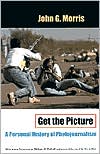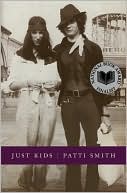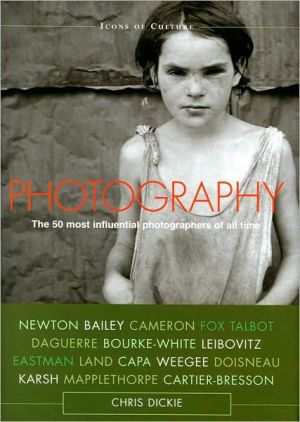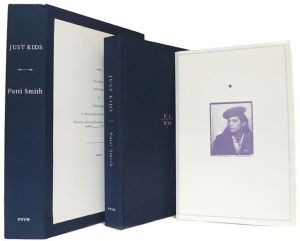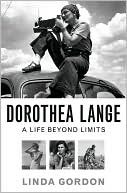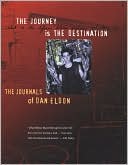Get the Picture: A Personal History of Photojournalism
How do photojournalists get the pictures that bring us the action from the world's most dangerous places? How do picture editors decide which photos to scrap and which to feature on the front page?\ Find out in Get the Picture, a personal history of fifty years of photojournalism by one of the top journalists of the twentieth century. John G. Morris brought us many of the images that defined our era, from photos of the London air raids and the D-Day landing during World War II to the...
Search in google:
A unique perspective on the great photojournalists of the past half-century, beginning with the ascendancy of Life magazine during World War II.Rosemary RanckMorris is an optimistic and amusing raconteur. -- NY Times Book Review
Forewordix1.Tuesday Was a Good D-Day for Life32.My Life Begins113.The Thirty-first Floor174."To Suffer or to Fight"275.The "Picture Men"356.Hollywood Bureau457.The "Day of Wrath"538.The Longest Wait659.To the Beach7910."Paris Is Free Again!"8711.Beatrice and Bruce and Mary10112."People Are People"11313.The Missouri Workshop12314.Red-baited12915."Nothing but Champagne!"13516."Personal and Confidential"14117.Disaster15318.Decisive Moments16319.Chim's Fate17120.The Many Woes of W. Eugene Smith18121.Camelot and Cuba18922.Departure19523.To the Post20324.Jobless at Forty-nine21325.To the Times22126.A Table at Sardi's23127.The Guns of '6823928.Abe in Orbit24929.Special Transmissions25530.Various Quests26731.After Gene27332.Geographic Agonistes28133.Paris, Capital of Photojournalism29134.The Gulf301Afterword309Acknowledgments315Index319
\ BooklistMorris was feisty and controversial . . . and he tells his story engagingly and excitingly. . . . A fascinating read.\ \ \ \ \ Henri Cartier-Bresson“Going through Morris’s book of memories, I felt I was sitting in front of a magic lantern.”\ \ \ \ Los Angeles Times Book ReviewHis best stories from the field are not tagging along with Capa and Hemingway . . . or having drinks at the Ritz in Paris with Marlene Dietrich; they are his less flashy but moving descriptions of the Japanese internment camps in California.”\ — Leslie Cockburn\ \ \ \ \ \ New York Times Book Review[Morris] weaves photographers, anecdotes, players, history and a credo or two into an engaging and informative tale.”\ — Rosemary Ranck\ \ \ \ \ \ Times Higher Education SupplementJames G. Morris describes himself as a journalist, yet not a writer or a photographer. He has spent a lifetime organizing photographers. For more than 50 years, he has commissioned, cajoled and cared about that unusual breed—the photojournalist. Get the Picture is his richly illustrated personal account of a life that leads us from the heady days at Life (first as Hollywood correspondent, then, through the turbulent years of the second world war, as London picture editor) via the executive editorship of the legendary Magnum Photos, and positions as picture editor at The Ladies Home Journal, The Washington Post and The New York Times. A glance at the index gives some indication of the extraordinary world Morris lived through.”\ — David Wason\ \ \ \ \ \ Rosemary RanckMorris is an optimistic and amusing raconteur. -- NY Times Book Review\ \ \ \ \ Publishers Weekly"Photographers are the most adventurous of journalists. They have to be. Unlike a reporter, who can piece together a story from a certain distance, a photographer must... be in the right place at the right time. No rewrite desk will save him." Morris wasn't on the front line, he was the guy who sent the photographers out and decided on what came back. And he did it for the best in the business. In this enlightening memoir, Morris traces his half-century career from the mail room at 'Life', and subsequent promotions there, to 'Ladies' Home Journal', the 'Washington Post' and the 'New York Times', and as executive editor at the famed Magnum photo agency. Morris worked with and knew as friends the greats of photojournalism, from W. Eugene Smith to the Turnley brothers. His colorful anecdotes have the authenticity of the insider, and photo buffs will finally learn how three rolls of Robert Capa's D-Day film was ruined, leaving only 11 usable shots. Morris also describes his own run-ins with such powerful bosses as Katharine Graham, Henry Luce and A.M. Rosenthal. His book is at its best when he is at the picture desk, making the later chaptersafter he moves to Paris in 1983 to become a writer and criticseem much less interesting. Morris could have said more on, say, the impact of newspaper color on photojournalism, but it's enough that he offers a behind-the-scenes look at the glory days before the immediacy of television changed the purpose and impact of the field. And of course, it's supplemented by 115 b&w photos. FYI: Newshounds should remember two books: Russell Miller's "Magnum" (Grove) and "Flash!: The Associated Press Covers the World" (Abrams).\ \ \ \ \ Library JournalMorris deserves to be better known by all who love good documentary and news photography. He has led or worked at some of the defining illustrated news magazines (Life, Ladies' Home Journal, and the New York Times Magazine) and media empires of the 20th century, worked closely with the best photographers of our times (Robert Capa, W. Eugene Smith, Cartier Bresson, "Chim" Seymour, George Rodger, and Lee Miller), and now tells the story of how our century's most powerful photographs came to be made. His inside stories about photographers, editors, and publishers are told here for the first time. Morris describes himself as a journalist and picture editor, not a reporter or photographer. He writes in a forthright and engaging style about his experiences in war and peace with the photographers who created the enduring visual records of the second half of this century. Readers will be grateful that he has finally put his rich memories on paper. Highly recommended, especially for photography and photojournalism collections.--Kathleen Collins, Bank of America Archives, San Francisco\ \ \ \ \ Kirkus ReviewsA straightforward journalistic memoir by a photo editor responsible for assigning and publishing some of the defining images of the past half-century. Morris has a clear-eyed, detached perspective on his former role as one of the key arbiters of taste for such publications as 'Life', the 'Washington Post', and the 'New York Times. "The picture editor," he writes, "is the voyeur's voyeur, the person who sees what the photographers themselves have seen, but in the bloodless realm of contact sheets, proof prints, and yellow boxes of slides." His self-effacing description aside, Morris was much more than a voyeur during his long career, he was one of a handful of top picture editors with the power to shape Americans' collective memory of world events, from the London air raids of WWII to school desegregation in Little Rock. Morris discovered his profession in an era when making a deadline still meant that a photo editor would drive at breakneck speed through twisting streets of some foreign land, ditch his car by the side of the road, and run to deliver film to an international carrier. Morris did all that and more, championing the images of such photographers as Robert Capa, Henri Cartier-Bresson, David "Chim" Seymour, George Rodger, Elliott Erwitt, and Eugene Smith. They were, to him, "the most adventurous of journalists," he writes. "Unlike a reporter, who can piece together a story from a certain distance, a photographer must get onto the scene of the action nothing must stand between him and reality." Although Morris does consciously acknowledge his own role as "a fixer of `reality' and `history,' " he still sees his profession with an unjaded eye, and rarely questions the reality hewas trying to fix. Although lively, Morris's book is nothing more profound than a recitation of events and anecdotes; he only rarely steps back to reflect on the practice of photojournalism in what was, admittedly, its Golden Age. \ \
